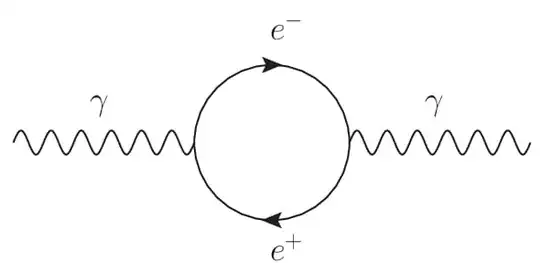Interaction vertex of QED are like: \begin{equation} e \bar{\psi} {A\mkern-9mu/} \psi \end{equation}
But we can't write a vertex where a particle-antiparticle pair annihilates in just 1 photon, due to conservation of energy in the centre of mass.
How can we write the vaccum polarizations as:
Where the arrows are for Dirac indices.
I recall something like "you need to make it interact with a heavy nucleus" and it makes sense, but where do I put it in the diagram? A 4 legged vertex means that's no more QED.
